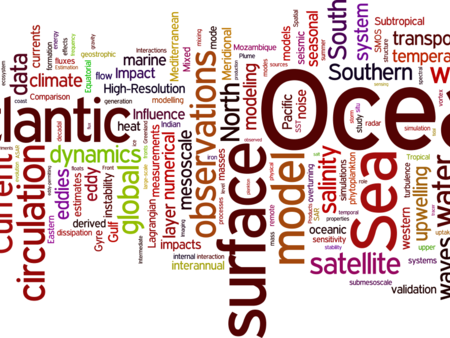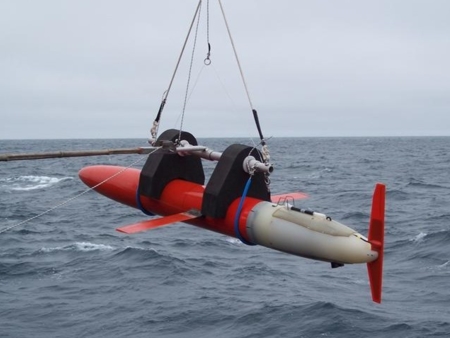The SWOT satellite reveals the fingerprints of extreme storms
Waves in the sea level
In a new study published in Geophysical Research Letters, we demonstrate the unique capability of SWOT in resolving patterns of ocean surface elevation that are the fingerprints of the most severe ocean storms. It is well known that as waves grow in height in the presence of high speed winds, they also grow in length. Typically, any storm with wave heights above 12 meters will have a measurable energy for wave components with wavelength longer than 500 m. And 500 m is precisely the shortest waves that can be resolved in SWOT "low resolution" data, all across the oceans, although these pretty long waves are strongly attenuated due to different measurement and processing effects. Understanding these measurements has allowed us to estimate the heights of the true waves from the oscillations visible in SWOT sea level data. In the paper we particularly focus on one storm that peaked on June 6 in the Southern Indian Ocean. The significant wave height in the storm probably exceeded 17 m, and this was associated with wavelengths up to 1100 m. These very long waves radiated throughout the Indian and Pacific Oceans, all the way to Alaska, half-way around the globe where SWOT could measure swell heights about 10 cm, on June 17. Several videos showing the surface elevation maps are available here for the same storm "Rosemary", and here for other storms including the swells from hurricane Kirk on October 9, 2024.
Pinball in the Pacific and ancient voyaging skills of polynesian navigators
In fact SWOT is so precise that it can detect swells with a wave height of only 3 cm: in one case (panel c above) the main swell from the south-west (30 cm high) is superimposed with a weaker swell from the east with a height of only 3 cm. This westerly swell was scattered from the main swell by the topography around Norfolk island located 300 km to the west of the SWOT measurement. The presence of this swell is thus evidence for the presence of the islands: these tiny amplitude waves, invisible to the naked eye (the wavelength is so large that you cannot see the slope) was actually felt through the motion of their canoes by traditional polynesian sailors and that helped them to find land beyond the horizon. This scattered swell field is not yet represented in ocean wave models, and SWOT will allow us to map the transformation of swells across ocean basins.
Swell transformation: currents, bathymetry, sea ice ...
The height, wavelength and direction of swells are fingerprints of the storm that generated the swells, but it also contains information on the currents, depth and possibly sea ice encountered: waves direction turn as the waves go through ocean currents...







